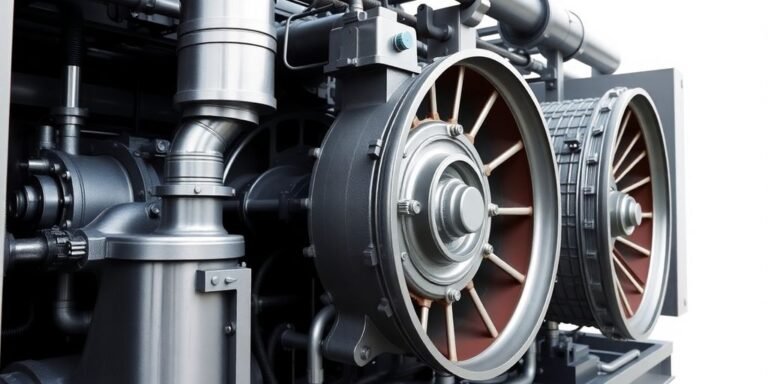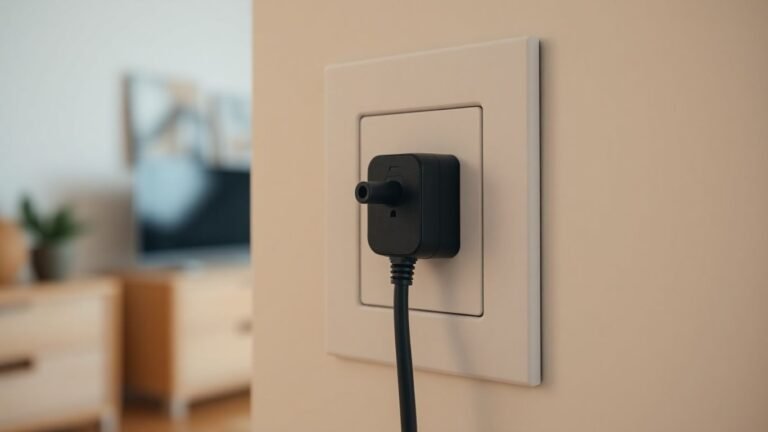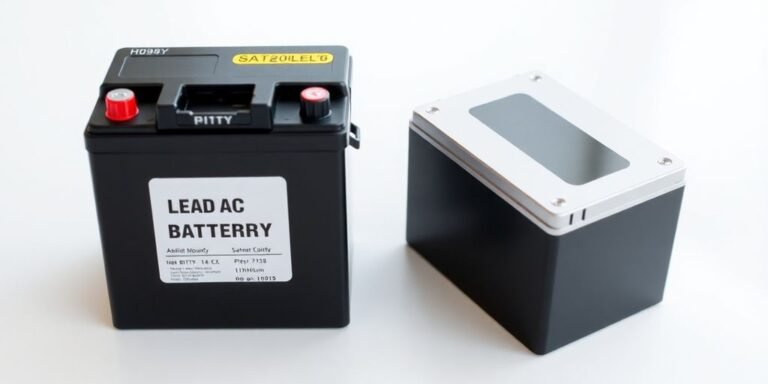The Future is Now: Investing in Smart City Infrastructure for Sustainable Urban Development
We’re living in a time where cities are getting a serious tech upgrade. It’s not just about making things look futuristic; it’s about using smart city infrastructure to actually make urban living better, more efficient, and kinder to the planet. Think less traffic jams, cleaner air, and services that just work. This shift is happening now, and it’s changing how we think about urban development and where we invest our resources. Let’s look at what makes a city ‘smart’ and why investing in this kind of infrastructure is a good idea.
Key Takeaways
- Smart city infrastructure uses technology to improve how cities run, making urban life more efficient and sustainable for everyone.
- Key parts of this infrastructure include smart transportation, energy systems, and digital networks that help manage resources better.
- Investing in smart city infrastructure can lead to lower energy costs, safer communities, and a better overall quality of life for residents.
- There are challenges like high building costs and concerns about data privacy that need careful planning and solutions.
- Successful smart city projects focus on what people in the community actually need and aim for long-term benefits, not just quick fixes.
Understanding Smart City Infrastructure
Cities are getting smarter, and it’s not just about flashy gadgets. It’s about using technology to make urban living better, more efficient, and kinder to the planet. Think of it as giving our cities a digital brain and nervous system. This infrastructure is the backbone that allows all the smart stuff to happen, from managing traffic lights to keeping the power on reliably. The goal is to create urban environments that are more responsive to the needs of their residents.
Defining The Smart City Ecosystem
A smart city isn’t just one thing; it’s a whole network of interconnected parts. It’s about how technology, data, and people work together. This ecosystem includes everything from the sensors on streetlights to the apps on your phone that help you find parking. It’s a complex web designed to improve how a city functions. We’re talking about a shift from old, clunky systems to something more dynamic and connected. It’s about making cities work better for everyone who lives in them.
The Role Of Technology In Urban Environments
Technology is the engine driving smart cities. It’s what allows us to collect information, analyze it, and then act on it. This could mean using sensors to monitor air quality or using data to figure out the best routes for public transport. It’s about making informed decisions based on real-time information. This tech helps cities become more efficient, sustainable, and generally a nicer place to be. It’s not just about having the latest gadgets; it’s about using them to solve real problems.
Key Components Of Smart City Infrastructure
Building a smart city requires several key pieces working in harmony. These are the building blocks that make everything else possible:
- Connectivity: This is the foundation, usually involving high-speed networks like 5G or advanced Wi-Fi, allowing devices and systems to talk to each other. Without good connections, nothing else works.
- Sensors and Devices: These are the eyes and ears of the smart city, collecting data on everything from traffic flow and energy usage to noise levels and waste bin fullness.
- Data Platforms: This is where all the information collected by sensors is stored, processed, and analyzed. Think of it as the city’s central brain.
- Analytics and AI: Software that makes sense of the data, identifying patterns, predicting issues, and automating responses. This is what turns raw data into useful insights.
- Citizen Interfaces: Ways for people to interact with smart city services, like mobile apps for public transport or online portals for city services. This makes the technology accessible.
Building these interconnected systems requires careful planning. It’s not just about plugging in new tech; it’s about integrating it thoughtfully so it serves the community’s needs and improves daily life. The focus should always be on practical applications that make a tangible difference for residents and the environment.
These components work together to create a more intelligent and responsive urban environment. For example, smart grid technologies are a big part of this, helping communities manage their energy more effectively and promoting local energy initiatives. It’s a holistic approach to urban development.
Transforming Urban Mobility And Energy
Cities are getting a serious upgrade when it comes to how we get around and how we power everything. It’s not just about making things faster, but also cleaner and more efficient for everyone. Think about a city where traffic jams are way less common and where our energy use is a lot smarter.
Intelligent Transportation Systems For Efficiency
Traffic is a pain, right? Smart cities are tackling this head-on with intelligent transportation systems. These aren’t your grandpa’s traffic lights. We’re talking about systems that can actually sense how many cars are around and adjust the lights in real-time to keep things flowing. It’s all about making sure you’re not stuck waiting forever at an intersection. This also means better ways to manage public transport, like buses and trains.
You can get real-time updates on when your ride is coming, and paying for it is getting easier with mobile ticketing. The aim is to make public transit so good that more people choose it over their cars. Plus, with the rise of electric vehicles (EVs), cities are busy putting in more charging stations. It’s a big shift towards making travel smoother and less of a headache.
Here’s a look at how EV sales are expected to grow:
| Year | Global EV Sales (Millions) |
|---|---|
| 2025 | 10 |
| 2030 | 30 |
| 2035 | 60 |
Smart Grid Technologies For Sustainable Energy
Powering a city is a huge job, and smart grids are changing the game. Instead of just sending power out and hoping for the best, smart grids monitor energy use as it happens. This means less wasted electricity and lower bills for residents. Cities are also getting serious about green energy. Imagine solar panels on buildings and wind turbines working together to power neighborhoods.
This move away from old-school fossil fuels is not only good for the planet but can also save money in the long run. It’s about creating a more reliable and cleaner energy system for everyone. Some cities are even looking into advanced solutions like hydrogen generators to support this transition, providing clean and reliable power for things like EV charging infrastructure and smart city grids.
Enhancing Urban Mobility With Data-Driven Solutions
Data is the secret sauce for making cities move better. By collecting information from traffic sensors, public transport, and even weather reports, cities can figure out the best ways to manage everything. For example, analyzing traffic patterns can help reroute vehicles during busy times or plan new roads. It’s about using what we learn from data to make smarter choices. This also applies to how we manage resources like water. Smart meters can track usage and help fix leaks faster, saving a precious resource. It’s all about making the city work more smoothly and efficiently for the people living in it.
Using data to understand how people move and use energy allows cities to make targeted improvements. This means less wasted resources and a more comfortable experience for residents.
Here are some ways data is improving city services:
- Transportation: Using traffic camera data to adjust signals and reduce congestion.
- Energy: Analyzing smart meter data to find areas of high energy use and promote efficiency.
- Waste Management: Employing sensors in bins to optimize collection routes and save fuel.
Leveraging Technology For Enhanced Living
It’s easy to get excited about all the new tech, but we can’t forget about the people living in these cities. Smart cities are really about making life better for everyone, not just about having fancy gadgets. It’s about using technology to make things smoother, cleaner, and more responsive to what people actually need. This is a big shift, and it’s happening right now.
Artificial Intelligence In Urban Planning And Management
Artificial intelligence, or AI, is changing how cities are planned and managed. It’s like having a super-smart assistant that can look at tons of data to help make better choices. Think about traffic flow, how much energy we’re using, or even where to put new parks. AI can predict traffic jams and change traffic lights on the fly to keep things moving. It can also help city planners figure out the best spots for new housing or green spaces based on what the community needs. This data-driven approach helps cities become more efficient and livable.
Internet Of Things For Improved City Services
The Internet of Things, or IoT, is all about connecting everyday objects to the internet. This is a huge deal for smart cities. Imagine streetlights that dim themselves when no one’s around, or trash cans that signal when they’re full. IoT lets us collect information from all over the city and use it to make services work better. It means the city can react more quickly to what’s happening.
Here are a few examples:
- Smart streetlights that adjust brightness based on how many people are around.
- Sensors that check air quality and alert officials if pollution levels get too high.
- Connected cars that can talk to each other to help prevent accidents.
Cyber-Physical Systems For Responsive Operations
Cyber-physical systems are basically where the digital world and the physical world meet. They involve sensors, software, and networks working together to control physical things. In a city, this could mean systems that manage water distribution, power grids, or even emergency response. These systems can monitor conditions in real-time and make adjustments automatically. For instance, a smart water system could detect a leak and shut off the water in that area immediately, saving resources and preventing damage. It’s about creating a city that can sense, think, and act.
The goal isn’t just to implement new technology, but to use it thoughtfully to create cities that are more equitable, sustainable, and simply better places to live for everyone.
Economic And Social Impacts Of Smart Cities

So, what’s the big deal with smart cities when it comes to money and people? It’s not just about fancy gadgets and faster internet. These urban upgrades actually change how cities make money and how people live in them. Smart city initiatives are designed to create a more efficient, sustainable, and livable environment for everyone.
Job Creation Through Tech And Infrastructure Development
Building and running a smart city means a lot of new work. Think about all the construction needed for new infrastructure, like laying fiber optic cables or setting up sensor networks. Then there are the tech jobs: software developers to create the systems, data analysts to make sense of all the information, and engineers to keep everything running smoothly. It’s a whole new wave of employment opportunities that didn’t exist before. For instance, some industrial smart city projects have already shown a significant boost in local jobs and investment.
- Construction and installation of new digital and physical infrastructure.
- Development and maintenance of software and hardware systems.
- Data science and analytics roles to interpret urban information.
- Specialized roles in areas like cybersecurity and network management.
Attracting Innovation And Business Growth
Cities that invest in smart technology become really attractive to businesses. Companies see these places as forward-thinking and ready for the future. This can lead to more businesses setting up shop, which in turn creates more jobs and economic activity. It’s like a snowball effect. A city that embraces innovation signals it’s a good place to be for growth. This can also lead to increased tax revenue for local governments, which can then be reinvested into public services. The decreasing cost of battery storage, for example, is making it more accessible for various users, driving innovation and competitive pricing in that sector, which can attract related businesses. See battery storage details.
Promoting Digital Literacy And Inclusion
Now, not everyone is a tech whiz, and that’s perfectly fine. But in a smart city, it’s important that everyone can participate. This means making sure people have the skills to use the new technology. Cities can help by offering free training sessions, maybe at the local library or community center. They also need to make sure the technology itself is accessible, especially for people with disabilities. The goal is to make sure no one gets left behind. If some people can’t access or use the smart services, it could actually make existing inequalities worse. We need to think about how to make sure everyone benefits.
It’s easy to get caught up in the futuristic aspects of smart cities, but the financial and social side is just as important. We need to make sure that as cities become ‘smarter,’ they also become more equitable and provide real benefits to all residents, not just a select few. This means actively working to bridge the digital divide and create opportunities for everyone to thrive in this new urban landscape.
Navigating Challenges In Smart City Investments

Building a smart city sounds like a fantastic idea, and honestly, it can be. But getting there isn’t always a walk in the park. There are some pretty big roadblocks that projects run into, and it’s important we talk about them openly.
Addressing High Infrastructure Costs And Funding Models
Let’s face it, setting up a smart city isn’t cheap. We’re talking about installing all sorts of new tech, upgrading networks, and getting the software to talk to each other. This initial investment can be a real strain on city budgets. Cities often have to piece together money from different places, like public funds and private companies, which can get complicated. There’s always the risk that costs will go up more than planned, and nobody wants that.
Ensuring Data Privacy And Security
This is a big one. Smart cities collect a ton of information about us – how we get around, how much power we use, you name it. This data can be super useful for making city services better, but it also brings up serious worries about privacy. What happens if this information gets into the wrong hands? How do we make sure it’s used the right way? These are tough questions that don’t have simple answers. Building trust with residents means being upfront about how their data is handled. It’s important to look into solutions like advanced waste management systems that use IoT for smart monitoring, as these also require robust data security [cfe9].
Overcoming Regulatory Barriers And Interoperability Issues
Sometimes, old rules and regulations can slow down new ideas. Local governments might have laws that don’t quite fit with modern technology, making it hard to get things done. Plus, getting different systems to work together can be a headache. Lots of smart city tools come from different companies, and making sure they all play nicely is key. Cities need to pick technologies that can connect and share information easily.
Fostering Community Engagement And Equity
Smart cities are supposed to make life better for everyone, right? But we need to make sure nobody gets left behind. Not everyone has the latest gadgets or knows how to use them. This can create a gap, where some people benefit from smart city services while others can’t. It’s vital that everyone has a fair shot at accessing technology and learning how to use it. Otherwise, smart cities could end up making existing problems worse. We need to think about how to make sure these advancements are accessible to all residents.
Building trust and ensuring that smart city initiatives truly serve the needs of all residents is paramount. This involves open communication, clear policies on data usage, and active participation from the community in the planning stages. Without this, even the most technologically advanced city will struggle to gain widespread acceptance and deliver on its promises.
The Future Of Urban Development
So, what’s next for our cities? We’ve learned a lot from the early days of smart city projects. One big lesson is that just throwing technology at a problem doesn’t work. People need to be on board, and they need to understand how to use the new systems. If folks don’t see the point or can’t figure it out, the whole thing can fizzle. Plus, everyone’s rightly concerned about their data. Building trust means being upfront about privacy and security. And let’s not forget the cost; these projects are pricey, and figuring out how to pay for them is an ongoing puzzle.
Early attempts, like building entire cities from scratch, showed just how complicated it all is and how much long-term commitment is needed. Flexibility is also super important. Technology moves fast, so cities need to be able to change their plans as new things come along. It’s like trying to build with LEGOs when the bricks keep changing shape.
Lessons Learned From Early Smart City Implementations
- Technology isn’t enough: Community buy-in and usability are key.
- Data privacy matters: Building trust requires transparency.
- Cost management is vital: Finding sustainable funding is a constant challenge.
- Flexibility is paramount: Cities must adapt to rapid technological change.
The biggest takeaway from early smart city efforts is that a city’s success hinges on its people as much as its technology. Without community engagement and a clear benefit for residents, even the most advanced systems can fail to make a real difference. It’s about creating places that work for everyone, not just for the sake of innovation.
Future Prospects For Sustainable Urban Living
Looking ahead, things are looking pretty interesting. We can expect AI to get even more involved, helping manage traffic and energy use. Sustainability is going to be a huge focus, with cities really pushing for greener solutions to cut down on pollution. And importantly, the focus is shifting towards designing cities with the people who live in them front and center. This means making sure everyone benefits, not just a few. We need to work on closing the digital gap so everyone can participate. Think about smarter traffic lights that actually reduce jams and improve air quality. It’s all about making urban life better and more sustainable for everyone.
The Evolving Landscape Of Digital Infrastructure
Our cities are becoming more connected, and that means the digital backbone needs to keep up. We’re moving beyond just basic internet access. The future requires a more robust and adaptable digital infrastructure that can support new services and handle increasing demands. This isn’t just about faster speeds; it’s about creating a foundation that’s secure, reliable, and accessible to all residents. We need to think about how this infrastructure can support things like public services and new business opportunities. It’s a complex puzzle, but getting it right means cities can truly thrive in the years to come. The old ways of building networks just won’t cut it anymore; we need something built for the future, not just for today.
- AI Integration: Expect AI to manage traffic, energy, and more.
- Green Initiatives: Cities will prioritize reducing their environmental impact.
- Citizen-Centric Design: Future cities will be built around resident needs.
- Advanced Connectivity: The digital infrastructure will become more sophisticated and widespread.
Wrapping It Up
So, we’ve talked a lot about how technology is changing our cities, making them smarter and, hopefully, better places to live. It’s not just about fancy apps or self-driving cars, though those are pretty cool. It’s really about using these tools to make things work more smoothly, use less energy, and just generally improve daily life for everyone. Of course, it’s not all easy street.
There are big costs involved, and we’ve got to be super careful about our personal information and make sure everyone, no matter their tech skills, can benefit. But looking at everything, it feels like we’re on the right track. Investing in these smart city ideas now means we’re building a foundation for a more sustainable and efficient future, and honestly, that’s something worth getting behind.
Frequently Asked Questions
What exactly is a smart city?
A smart city is a place that uses technology, like sensors and computers, to make life better for the people living there. It’s about making things like traffic, energy use, and city services work more smoothly and efficiently. Think of it as a city that’s really good at using technology to solve problems and improve how things work for everyone.
What are the main parts of a smart city’s technology?
Smart cities use a few key technologies. The ‘Internet of Things’ (IoT) connects everyday objects, like streetlights or trash cans, to the internet so they can send information. Artificial Intelligence (AI) helps analyze this information to make smart decisions, like changing traffic lights when there’s a jam. Cyber-Physical Systems are also important, linking the real world with digital technology to make city operations more responsive.
How does smart city tech help with transportation and energy?
For transportation, smart cities use systems that manage traffic lights to reduce waiting times and help people find parking spots easily. For energy, they use ‘smart grids’ that manage electricity use better, often by using more renewable sources like solar or wind power. This means less wasted energy and lower bills for everyone.
What are the good things that come from investing in smart cities?
Investing in smart cities can create new jobs, especially in technology and building new infrastructure. It can also attract new businesses and encourage innovation. Plus, by making cities more efficient and sustainable, it can improve the quality of life for residents, making cities cleaner and safer places to live.
What are the biggest challenges when building a smart city?
Building smart cities can be very expensive, and finding the money is a big challenge. Another major worry is keeping people’s personal information private and secure from hackers. It can also be hard to get different technologies to work together, and sometimes old rules and laws get in the way of new ideas. It’s also important to make sure everyone in the community is involved and benefits.
What should we expect from smart cities in the future?
In the future, smart cities will likely use even more advanced AI and connected devices to manage everything from healthcare to public safety. The focus on sustainability will grow, with more green energy and efficient resource use. The goal is to create cities that are not only technologically advanced but also fair, inclusive, and great places for everyone to live.








